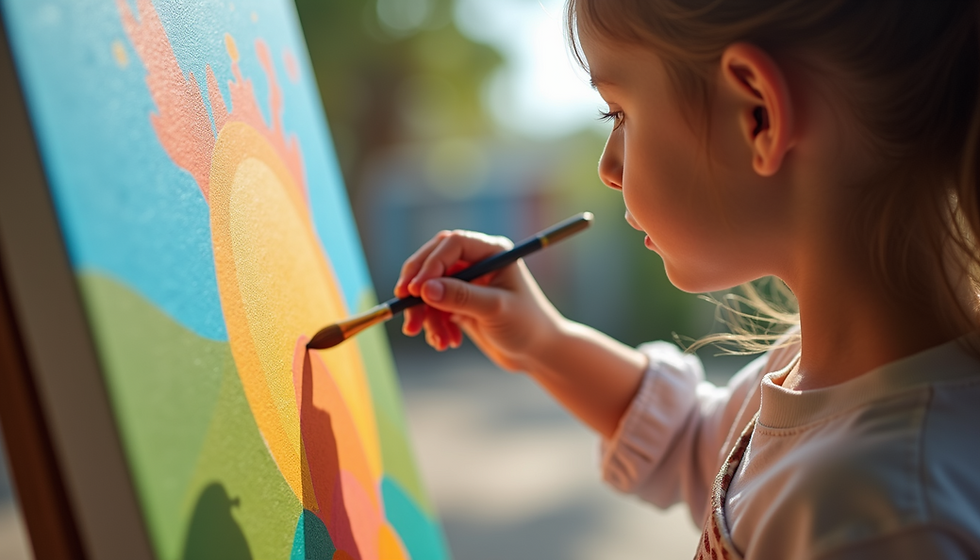Strengthening Bonds Through Artistic Collaboration: Creative Team Building Activities
- Rebecca j. Hopp
- Mar 27
- 3 min read
In today's world, creativity is a vital asset for any team. Strong bonds within a group not only enhance productivity but also foster an enjoyable workplace. Artistic collaboration is an effective way to build these connections while encouraging innovation. By harnessing the power of art, teams can strengthen their relationships and create a more cohesive work environment.
The Importance of Team Building
Team building is essential for nurturing relationships among coworkers. It helps individuals understand each other better, fostering trust and empathy. When teams engage in collaborative artistic projects, they promote communication and encourage diverse perspectives. This, in turn, leads to improved problem-solving skills and a more innovative approach to projects.
Research conducted by the University of Central Florida reveals that team-building exercises lead to a 12% increase in employee productivity. Additionally, these activities help to reduce workplace stress and boost morale. By creating a supportive atmosphere, employees feel valued and motivated to contribute their best efforts.

Engaging in Artistic Collaboration
Artistic collaboration brings together individuals with different talents, perspectives, and ideas. When team members engage in creative activities, they learn to appreciate each other's strengths. This leads to a more harmonized workplace where everyone can contribute to a shared vision.
One powerful example of artistic collaboration is mural painting. Teams can work together to design and create a mural that represents their collective identity or company values. This not only beautifies the workspace, but also provides a sense of ownership and pride among team members.
Another successful artistic activity is collaborative music-making. Groups can use tools like GarageBand or simple instruments to create original compositions. This encourages active participation, boosts creativity, and helps individuals feel more connected to one another.

What are 5 Team Building Activities?
Artistic Workshops: Organizing workshops for painting, pottery, or photography encourages everyone to explore their creativity. Invite artists to facilitate sessions to elevate the experience.
Drama and Theater: Engaging in theater games and improvisational activities helps individuals step outside their comfort zones. This builds confidence and enhances communication skills.
Team-based Art Projects: Assign groups to work on specific artistic projects such as sculptures, graphic designs, or installations. These projects require collaboration and shared decision-making.
Photography Challenges: Organize a photography contest that encourages team members to capture images aligned with a theme related to the workplace or industry. It allows for personal expression while promoting camaraderie.
Creative Team Building Activities: Many organizations offer specialized sessions focusing on art as a vehicle for team building. Check out options like creative team building activities to help your team thrive.

Overcoming Challenges in Collaboration
While artistic collaboration can be beneficial, it is not without challenges. Team members may feel hesitant about engaging in creative activities for various reasons, such as fear of judgment or a lack of confidence in their skills. Here's how to address these concerns:
Create a Safe Space: Foster an environment where all ideas are welcomed without judgment. Encourage team members to share their thoughts openly, reinforcing that there are no right or wrong answers in creative expression.
Focus on the Process, Not Perfection: Emphasize that the goal is to enjoy the creative process rather than produce flawless work. Celebrate the effort and teamwork involved, as this will help build confidence among participants.
Encourage Individual Contributions: Allow team members to express their personal styles within the group project. This inclusion makes individuals feel more invested in both the outcome and their teammates.
By anticipating and addressing any challenges, you can ensure a more successful and productive artistic collaboration experience.

The Long-term Benefits of Artistic Collaboration
Engaging in artistic collaboration not only strengthens team bonds in the short term but also yields long-lasting benefits. Teams that regularly engage in creative activities are likely to experience:
Improved Communication: Artistic projects necessitate clear communication, helping teams establish better interaction patterns that extend far beyond creative tasks.
Enhanced Creativity: Regular collaboration fosters an environment where creativity thrives. Team members become more willing to take risks, ultimately leading to better problem-solving skills and innovation.
Increased Employee Retention: A cohesive team that shares common experiences and values is more likely to have higher retention rates. Employees are more inclined to stay within a supportive environment where they feel valued and connected.
By fostering artistic collaboration, organizations are investing in their most valuable asset—human capital.
By implementing these strategies, you’ll not only strengthen your team’s bonds but also position them for ongoing success and creativity in your organization.




Comments